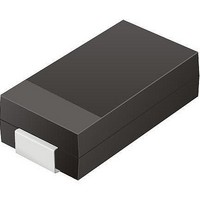TV04A171JB-G Comchip Technology, TV04A171JB-G Datasheet - Page 34

TV04A171JB-G
Manufacturer Part Number
TV04A171JB-G
Description
TVS 400W 170V BIDIRECT SMA
Manufacturer
Comchip Technology
Specifications of TV04A171JB-G
Voltage - Reverse Standoff (typ)
170V
Voltage - Breakdown
189V
Power (watts)
400W
Polarization
Bidirectional
Mounting Type
Surface Mount
Package / Case
DO-214AC, SMA
Channels
1 Channel
Clamping Voltage
275 V
Operating Voltage
3.5 V
Breakdown Voltage
189 V
Peak Surge Current
40 A
Peak Pulse Power Dissipation
400 W
Lead Free Status / RoHS Status
Lead free / RoHS Compliant
11. Write Operation Status
11.1
34
DQ7: Data# Polling
The device provides several bits to determine the status of a write operation: DQ2, DQ3, DQ5, DQ6, DQ7,
and RY/BY#.
RY/BY#, and DQ6 each offer a method for determining whether a program or erase operation is complete or
in progress. These three bits are discussed first.
The Data# Polling bit, DQ7, indicates to the host system whether an Embedded Algorithm is in progress or
completed, or whether the device is in Erase Suspend. Data# Polling is valid after the rising edge of the final
WE# pulse in the program or erase command sequence.
During the Embedded Program algorithm, the device outputs on DQ7 the complement of the datum
programmed to DQ7. This DQ7 status also applies to programming during Erase Suspend. When the
Embedded Program algorithm is complete, the device outputs the datum programmed to DQ7. The system
must provide the program address to read valid status information on DQ7. If a program address falls within a
protected sector, Data# Polling on DQ7 is active for approximately 1 µs, then the device returns to reading
array data.
During the Embedded Erase algorithm, Data# Polling produces a 0 on DQ7. When the Embedded Erase
algorithm is complete, or if the device enters the Erase Suspend mode, Data# Polling produces a 1 on DQ7.
This is analogous to the complement/true datum output described for the Embedded Program algorithm: the
erase function changes all the bits in a sector to 1; prior to this, the device outputs the complement, or 0. The
system must provide an address within any of the sectors selected for erasure to read valid status information
on DQ7.
After an erase command sequence is written, if all sectors selected for erasing are protected, Data# Polling
on DQ7 is active for approximately 100 µs, then the device returns to reading array data. If not all selected
sectors are protected, the Embedded Erase algorithm erases the unprotected sectors, and ignores the
selected sectors that are protected.
When the system detects DQ7 has changed from the complement to true data, it can read valid data at DQ7–
DQ0 on the following read cycles. This is because DQ7 may change asynchronously with DQ0–DQ6 while
Output Enable (OE#) is asserted low.
Table 11.1 on page 38
Polling algorithm.
Table 11.1 on page 38
shows the outputs for Data# Polling on DQ7.
and the following subsections describe the functions of these bits. DQ7,
Figure 17.8 on page
S29AL008J
D a t a
S h e e t
47, illustrates this.
Figure 11.2 on page 37
S29AL008J_00_09 February 23, 2010
shows the Data#











